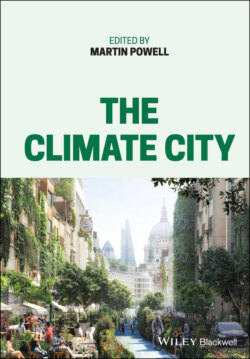Читать книгу The Climate City - Группа авторов - Страница 29
“Cumulative”: What Does This Mean?
ОглавлениеNow for a suggestion for cities to truly lead on climate. City leaders could, and one might argue should, account for all the carbon their city has sent into the atmosphere up to the point they reach “net-zero” emissions and then beyond. First-principles logic supports this. If a customer kept going to their favourite store and leaving with goods without paying, then started paying for goods after a certain number of visits, the shopkeeper would reasonably expect the customer to settle their old tab at some point. Only then would the shopkeeper be paid in full. On Earth, scientists track the response of the world’s natural systems to historic emissions. In the couple of centuries since the industrial revolution, cities have been emitting GHGs at vastly different scales and increasing at different rates. Even fully scoped, science-based, Paris-Agreement-compliant emissions reductions that start today would not eliminate that historical debt.
A fourth descriptor – “Cumulative” – would strengthen the definition of “Net-Zero”. It would also encourage cities in developed nations to fund the just transition to a sustainable future; not with unlimited liability but instead surrounded by some rational boundaries. These cities could calculate their historic emissions “debt” and fund carbon credits at a significant scale to help the less wealthy preserve the natural resources on which we all depend. Entities could also invest in carbon removal (just at a significantly higher cost per ton than preserving developing-countries’ forests). The key is to calculate how many tonnes of emissions long-term emitters have produced before they achieve net-zero emissions for the first time, and to purchase carbon credits to settle the full tab for the city up to that point.
The issue is not just theoretical. Carbon dioxide and some other GHGs, once emitted, remain in the atmosphere for over 100 years. The vast majority of global GHG emissions occurred within the last 80 years. For GHGs like carbon dioxide, nitrous oxide, HFC-23, and sulphur hexafluoride, most of the molecules ever emitted by human activity are still up there, trapping the sun’s energy and warming the planet. Like a debt owed to a shopkeeper, nothing substitutes for repayment. Box 1.1 highlights the activity at Microsoft as perhaps a model a city could adopt.
